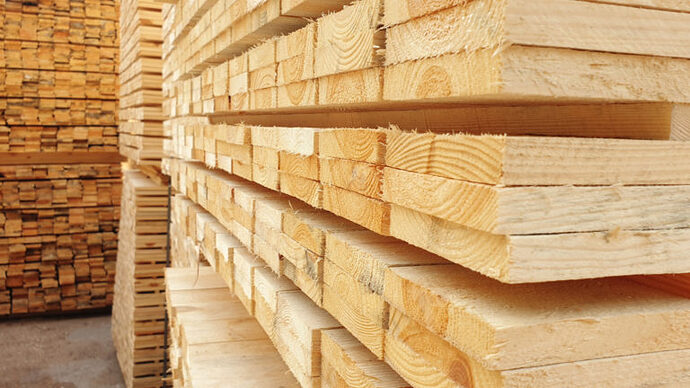If you’ve followed me for a while, you know I like to track lumber because the price movement of lumber is correlated to housing starts. Lumber is a critical component in housing construction, and recent price action has started to weaken following a steady ascent since November. That rise in lumber prices coincided almost exactly with the decline in long-term Treasury yields, which has brought mortgage rates back down. In turn, this has sparked a renewed sense of optimism within the housing sector.
However, the question remains: Is this optimism well-founded? Or is it fleeting sentiment set against a backdrop of broader economic uncertainties?
During the initial months of the pandemic, the lumber industry faced a significant slowdown in production due to health and safety restrictions. As the economy began to reopen, demand surged, driven by a combination of pent-up needs and a shift toward home improvement and construction projects. This imbalance led to a dramatic spike in lumber prices in 2021. Prices then suffered a severe decline and have been meandering largely sideways for a year.
If we are to avoid a soft landing and reaccelerate economic growth, lumber prices should reaccelerate. But that seems questionable now.
The housing market is currently in a state of flux, characterized by a lack of adequate price discovery. Inventory levels are at historic lows and demand is outstripping supply.
This imbalance has led to skyrocketing home prices. It has placed homeownership out of reach for many potential buyers and exacerbated affordability concerns. Moreover, the global economic landscape presents additional uncertainties. The situation in China, for example, remains precarious, with the country still grappling with the fallout from its economic challenges. As China plays a crucial role in the global economy, its ongoing troubles could have ripple effects. These could effect global supply chains, trade, and investment flows, and by extension, the housing market.
The Bottom Line
Given these complexities, the optimism surrounding the housing sector may seem misplaced. The fundamental issues plaguing the market — ranging from affordability constraints to global economic uncertainties — remain unresolved. While lower mortgage rates provide a glimmer of hope, they are not a panacea for the structural challenges facing the housing market.
Furthermore, the slowdown in the rise of lumber prices, while indicating a rebound in demand, could soon reverse suggesting housing starts are slowing down.
The bottom line here is simple. While the slow and steady ascent of lumber prices and the decline in mortgage rates offer a beacon of hope for the housing sector, investors must ground this optimism in the reality of persisting challenges. Risk-off conditions could soon present themselves yet again for a tail event in the stock market.
On the date of publication, Michael Gayed did not hold (either directly or indirectly) any positions in the securities mentioned in this article. The opinions expressed in this article are those of the writer, subject to the InvestorPlace.com Publishing Guidelines.
